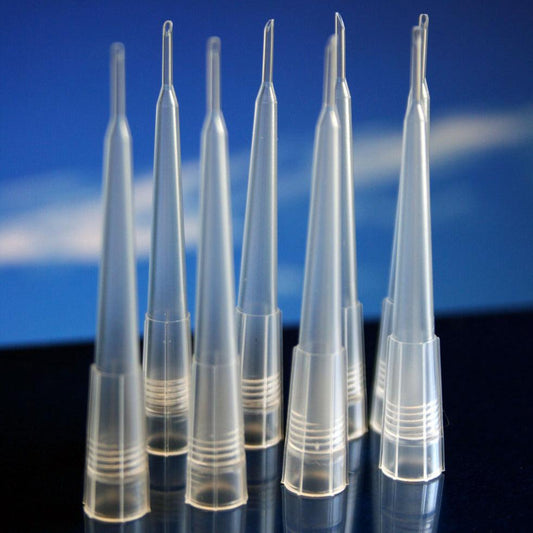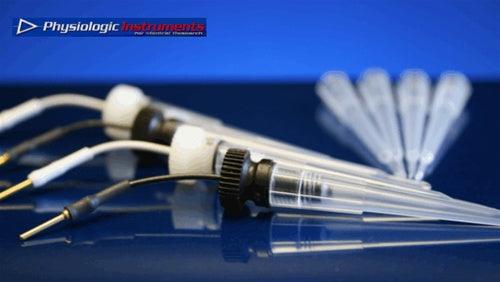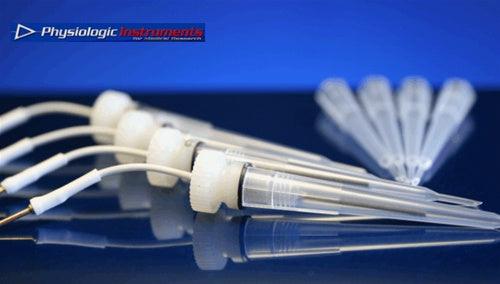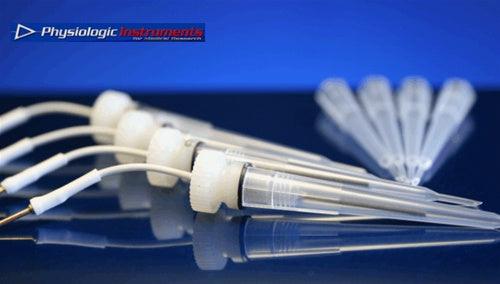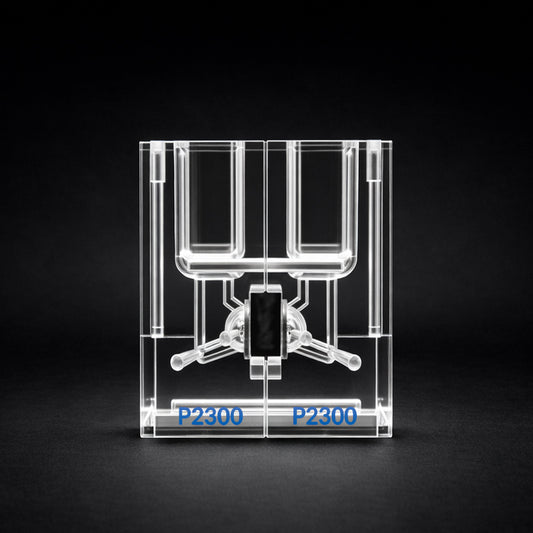Seit über einem halben Jahrhundert ist die Ussing-Kammer ein Eckpfeiler der Forschung zur Epithelphysiologie. Wenn es darum geht , Mukoviszidose auf zellulärer Ebene zu verstehen, ist dieses System nach wie vor die zuverlässigste und präziseste Methode zur direkten Messung der CFTR-Funktion (Cystic Fibrosis Transmembrane Conductance Regulator) .
Bei Physiologic Instruments haben wir die Konstruktion von Ussing-Kammern verfeinert und optimiert, um den anspruchsvollen Bedürfnissen der modernen CF-Forschung gerecht zu werden – von der Grundlagenforschung über die präklinische Arzneimittelentwicklung bis hin zur personalisierten Medizin.
Warum Ussing-Kammern in der Mukoviszidoseforschung wichtig sind
Mukoviszidose wird durch Mutationen im CFTR-Gen verursacht, die den Transport von Chlorid- und Bicarbonat-Ionen durch Epithelzellen beeinträchtigen. Dieser Defekt führt zu zähem, klebrigem Schleim in Lunge, Darm und anderen Organen und ist die Ursache für die schwerwiegenden Komplikationen der Erkrankung.
Die Ussing-Kammer bietet eine kontrollierte, reproduzierbare Umgebung für:
-
Lebendes Epithelgewebe oder kultivierte Monolayer präparieren.
-
Simulation von Schleimhaut- und Serosaumgebungen.
-
Um den Ionentransport direkt zu beurteilen, werden der Kurzschlussstrom (Isc) und der transepitheliale Widerstand (TER) gemessen.
Durch die Isolierung der Epithelfunktion von systemischen Einflüssen ermöglichen Ussing-Kammern den Forschern einen reinen, quantitativen Einblick in die CFTR-Aktivität.
Wichtigste Anwendungen in der Mukoviszidoseforschung
1. Wirkstoffforschung und -entwicklung
Moderne CF-Therapien, wie z. B. CFTR-Modulatoren, zielen darauf ab, die Funktion von Chloridkanälen zu verbessern oder wiederherzustellen. Mithilfe einer Ussing-Kammer von Physiologic Instruments können Forscher:
-
Etablierung des basalen Ionentransports in Gewebeproben von CF-Patienten.
-
Potenzielle Wirkstoffkandidaten anwenden.
-
Quantifizierung der Verbesserung der CFTR-vermittelten Ströme.
Mit diesem Ansatz lässt sich feststellen, ob eine Therapie wirksam ist, bevor man zu kostspieligen und zeitaufwändigen klinischen Studien übergeht.
2. Personalisierte Medizin
Patienteneigene Darmorganoide und Atemwegsepithelkulturen können in Ussing-Kammern getestet werden, um Folgendes zu bestimmen:
-
Welche Medikamentenkombination stellt die CFTR-Aktivität beim Patienten am besten wieder her?
-
Die optimale Dosierung für maximale therapeutische Wirkung.
Dadurch ist es möglich , dem richtigen Patienten das richtige Medikament zuzuordnen und so die Behandlungsergebnisse zu verbessern.
3. Untersuchung von Krankheitsmechanismen
Neben der Erprobung von Medikamenten ermöglichen Ussing-Kammern detaillierte Untersuchungen von:
-
Wie Entzündungen die CFTR-Aktivität verändern.
-
Die Auswirkungen chronischer Infektionen auf den Ionentransport.
-
Wie sich die Schleimdicke auf die Epithelfunktion auswirkt.
Warum Forscher physiologische Instrumente mit Kammern für die CFTR-Forschung auswählen
Unsere Ussing-Kammersysteme sind auf Präzision, Flexibilität und Reproduzierbarkeit ausgelegt:
-
Modulares Design für eine breite Palette von Gewebetypen und experimentellen Aufbauten.
-
Hochempfindliche Verstärker für präzise elektrophysiologische Messungen.
-
Einfache Wartung zur Unterstützung von Hochdurchsatzstudien.
Wir bieten Ihnen außerdem Protokollunterstützung und technisches Fachwissen, um sicherzustellen, dass Ihre CF-Forschung sowohl von der richtigen Ausrüstung als auch von der richtigen Methodik profitiert.
Der Goldstandard – und die Zukunft
Mit dem Fortschritt der Mukoviszidoseforschung bleiben die Ussing-Kammern von Physiologic Instruments der Maßstab für die Messung des epithelialen Ionentransports. Ob für die Entwicklung der nächsten Generation von Mukoviszidosetherapien oder die Personalisierung von Behandlungsplänen für Patienten – dieses System liefert präzise Daten, die den Fortschritt der Forschung vorantreiben.

Möchten Sie mehr erfahren?
Kontaktieren Sie uns , um zu besprechen, wie ein Ussing-Kammersystem von Physiologic Instruments Ihre CF-Forschung beschleunigen und Ihnen helfen kann, Daten in Publikationsqualität zu generieren.
Empfohlene Ausrüstung für diese Forschung
| Ausrüstungskategorie | Beschreibung | Link |
|---|---|---|
| Ussing Chamber Systems | Komplette elektrophysiologische Plattformen für Studien zum epithelialen Transport und zur Barrierefunktion. | Ussing Chamber Systems |
| Verwendung von Kammern (EasyMount & Classic) | Separate Kammern für Darm, Atemwege, Nieren und kundenspezifisches Gewebe. | Ussing Chambers |
| Verwendung von Kammerschiebern | Präzisions-Acryl-Schieber zur Montage von Gewebeproben und zur Nachbildung experimenteller Geometrien. | Verwendung von Kammerschiebern |
| Spannungs-/Stromzangen (VCC MC8-Serie) | Spannungsklemmverstärker für CFTR-Assays, TEER und transepitheliale Messungen. | Spannungsklemmen |
| Software erwerben und analysieren | Software zur Datenerfassung und -analyse für elektrophysiologische Experimente an Epithelzellen. | Erfassen und Analysieren |

